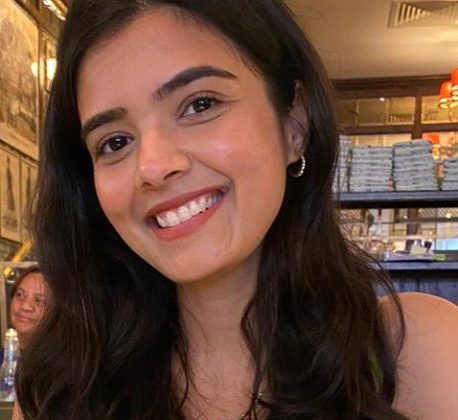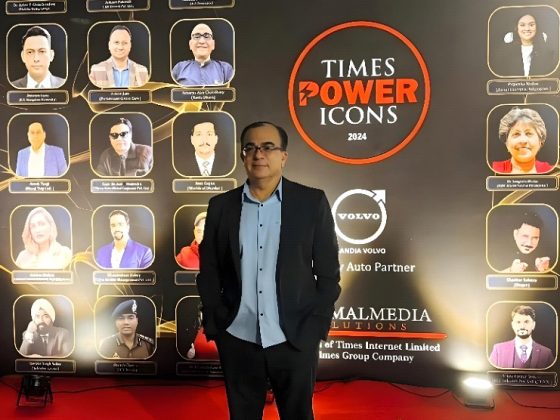From Runways To Realities: How AI And AR Are Redefining Consumer Experiences – By Praveen Sinha – Chairman Moksha Media Group
How do you envision AI, 3D modeling, AR, and VR transforming the fashion and FMCG industries in the coming years?
The integration of AI, 3D modeling, AR, and VR is set to revolutionize how consumers interact with brands. In fashion, virtual try-ons using AR and VR will enable customers to visualize products in a hyper-realistic way before purchase, bridging the gap between physical and online shopping. For FMCG, these technologies can create immersive experiences for product trials and campaigns, enhancing consumer engagement. AI will play a critical role in personalizing these experiences, analyzing consumer preferences, and delivering tailored solutions. I also see huge transformation in Social communities- The Future of Immersive Social Communities:
1. Life Beyond Screens: Platforms won’t be confined to your phone or laptop. Instead, you’ll wear sleek AR glasses or step into VR pods to virtually “hang out” with friends in a Parisian café, a futuristic city, or even on the surface of Mars—all without leaving your home.
2. Virtual Vacations: Forget spending hours in airport lines! AI and 3D modeling will recreate the Taj Mahal or Hawaiian beaches with such precision that you’ll feel the breeze, hear the sounds, and see the tiniest details as if you were there. Travel might become less about physical locations and more about accessing premium VR experiences.
3. Hyper-Real Content Creation: Instead of flat photos, users will create 3D, interactive moments. Imagine walking through someone’s birthday party or exploring a fashion show livestream from the front row—all in a fully immersive 360° environment.
4. AI-Driven Personas: Virtual influencers will evolve into AI-driven personalities capable of holding conversations, offering advice, or hosting live events, blurring the line between real and virtual friendships.
5. Emotional Immersion: AI-powered systems could adapt experiences to your emotions. Feeling down? A custom VR sunset in Santorini might cheer you up. Celebrating a promotion? Invite friends to a private VR yacht party!
6. Digital Collectibles and Spaces: AR and VR will transform NFTs and digital goods into assets you can use. Show off a digital sculpture in your virtual room or wear that exclusive VR outfit to your next virtual meet-up.
7. Community Evolution: AR and VR will enable communities to gather in real-time, immersive environments. Book clubs might meet in a virtual Hogwarts library, while fitness groups could run through a gamified jungle terrain together. The Downsides? While the tech promises boundless creativity, it raises questions: • Will people lose the charm of real-world connections? • Will virtual vacations replace the joy of actually traveling? • Could social isolation deepen if people prefer VR worlds over reality? One thing is certain: the line between digital and physical life is about to blur, and how we interact, connect, and experience the world will never be the same.
Can you share examples of how Moksha Media Group is leveraging these technologies?
At Moksha Media Group, we’ve integrated AI into our creative services to streamline production processes and improve personalization in digital marketing campaigns. Our work with 3D and AR technology enables brands to create immersive catalogs for their e-commerce platforms. For instance, customers can visualize a fashion collection in a virtual showroom or interact with FMCG products in augmented environments. This approach helps brands tell compelling stories while driving higher conversion rates.
In what ways can AR and VR redefine the online shopping experience?
AR and VR can turn online shopping into an interactive experience. Virtual fitting rooms for apparel, 360-degree product views, and even VR stores are becoming more accessible. For instance, imagine walking through a virtual boutique where you can pick, try, and purchase items—all from your living room. This level of immersion not only enhances user satisfaction but also reduces return rates, as customers make more informed choices.
What challenges do you foresee in implementing these virtual experiences, and how can they be addressed?
The primary challenges are ensuring the accuracy of virtual representations and managing the cost of deploying these technologies at scale. High-quality 3D modeling and real-time rendering require advanced tools and expertise. Additionally, accessibility is a concern; not all customers have the hardware for VR. These challenges can be mitigated through partnerships with tech companies, continuous innovation to reduce costs, and ensuring these experiences are device-agnostic.
How is AI being used to optimize supply chain operations and sustainability in these sectors?
AI has significantly enhanced supply chain efficiency by enabling accurate demand forecasting, inventory management, and real-time tracking. In fashion and FMCG, AI helps reduce overproduction, which is a major contributor to waste. By analyzing customer data, AI can predict trends and allow businesses to create products that align closely with consumer needs, minimizing excess stock and promoting sustainability.
What role do AI-driven analytics play in personalization for consumers?
Personalization is key to consumer loyalty today. AI-driven analytics allow brands to understand consumer preferences at a granular level. For example, based on browsing behavior, AI can suggest products tailored to a shopper’s style, budget, or past purchases. In FMCG, it can recommend health-focused products or bundles aligned with dietary preferences. This level of personalization creates a seamless, enjoyable shopping experience while driving sales.
What trends do you anticipate will shape the future intersection of technology, fashion, and FMCG?
I see the rise of phygital (physical-digital) experiences as a defining trend. Technologies like AI, AR, and VR will merge online and offline shopping into a cohesive experience. For example, consumers might scan products in-store to unlock AR-based product information or use VR to shop a global brand’s flagship store virtually. Sustainability-focused innovations, like AI-powered recycling programs, will also gain prominence.
Reflecting on your experience with Jabong, how have technological advancements influenced your approach to subsequent ventures?
My journey with Jabong taught me the importance of embracing technology early on. At Jabong, we were at the forefront of leveraging digital platforms to transform the fashion retail landscape. Today, the rapid advancements in AI, AR, and VR have opened new possibilities for personalization, operational efficiency, and customer engagement. This perspective drives Moksha Media Group’s focus on integrating cutting-edge technology into our services.
What advice would you offer to entrepreneurs looking to integrate AI and immersive technologies into their businesses?
Firstly, focus on understanding your customer and their pain points. Technology should serve as an enabler to solve real problems, not just as a trend. Secondly, stay ahead of the curve by investing in continuous learning and experimentation. Lastly, build strong partnerships with tech innovators to leverage their expertise and scale faster. Innovation is key, but so is execution.
Closing Note: Mr. Sinha’s vision of a tech-integrated future is both inspiring and pragmatic. As AI, AR, VR, and 3D technologies continue to evolve, the fashion and FMCG industries are poised to enter a new era of innovation and customer-centric experiences. Areas where Moksha has front runner advantages: • Creating Immersive Brand Experiences: • Revolutionizing Content Creation: • Delivering Virtual Events and Experiences:. • Data-Driven Personalization: • Expanding Global Reach: • Offering Virtual Try-Before-You-Buy Experiences: • Gamifying Engagement: • Sustainability and Cost Efficiency: • Future-Proofing Brands: • Thought Leadership and Training









